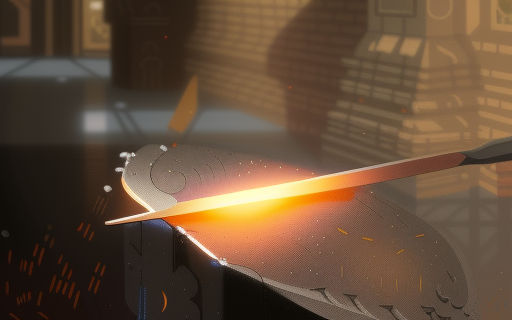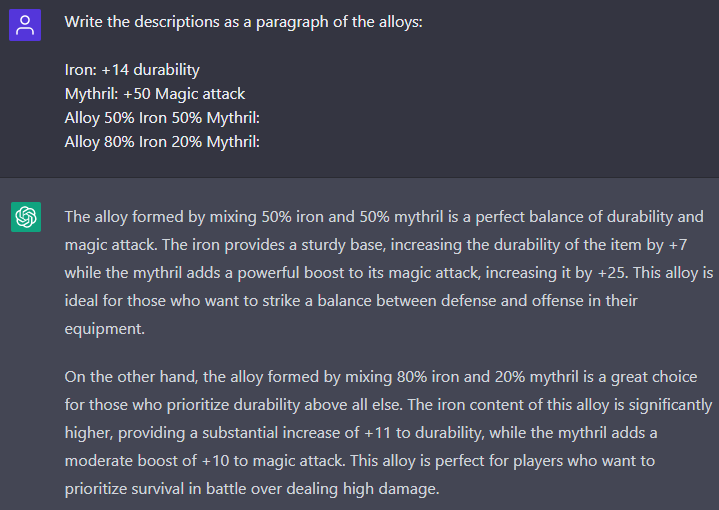Unleashing the Power of AI #9: AI-generated Item Descriptions
Welcome back to another edition of "Unleashing the Power of AI"! As voted by our readers in last week's poll, we will be diving into the world of GPT-3 and its capabilities in generating unique and engaging descriptions for game items. Whether it's weapons, armor, or even crafting materials, GPT-3 has the ability to bring a new level of immersion and creativity to the gaming experience. So, let's get started and discover how GPT-3 can revolutionize the way we think about game item descriptions.

Unique Item Descriptions
One of the main benefits of using GPT-3 for game item descriptions is the ability to create unique and varied descriptions for each item. This can greatly enhance the player's immersion and enjoyment of the game, as they are constantly discovering new and interesting items. Additionally, GPT-3 can also generate descriptions for items that do not yet exist in the game, allowing for limitless possibilities for crafting and item creation. Another benefit is the time saved by developers, as GPT-3 can quickly generate descriptions for a large number of items, reducing the need for manual labor.
Moreover, GPT-3 can also be trained to understand the context of the game, making sure that the descriptions it generates are coherent and consistent with the game's setting and lore. This can greatly improve the overall quality of the game, as it ensures that all items fit seamlessly into the world and story. The training process for GPT-3 involves providing it with a dataset of existing item descriptions and allowing it to learn the patterns and conventions used in these descriptions. This allows GPT-3 to generate descriptions that are similar in style and tone to those that already exist in the game, ensuring consistency and coherence.
Unlimited Crafting
One possible implementation of GPT-3 in a game could be an unlimited crafting system where each item created has a unique description. For example, in the game there could be detailed descriptions of various metals, each with their own properties. However, in this hypothetical system, it would be possible to create metal alloys based on the proportion of metal used in the crafting process. For example, 2 ingots of silver and 1 of gold would create 3 ingots of an alloy that is 33% gold and 67% silver. Meanwhile, 1 ingot of mythril and 3 of silver would create 4 ingots of an alloy that is 25% mythril and 75% silver. This would result in a description of the item that summarizes the properties it inherits in proportion to the purity of the resulting material. Even the possibility of adding the name of the user who created the sword, if that user is a known blacksmith (though, of course, this would be a separate system). This would bring a new level of depth and immersion to the game, making each item truly unique and adding a new layer of storytelling to the game.

In conclusion,
the use of GPT-3 for game item descriptions can greatly enhance the player's immersion and enjoyment of the game, as well as bring a new level of depth and storytelling to the game. The ability to create unique and varied descriptions for each item, as well as the ability to generate descriptions for items that do not yet exist in the game, opens up limitless possibilities for crafting and item creation. Additionally, the time saved by developers using GPT-3 to generate descriptions can be used to focus on other aspects of game development.
As always, from this blog we thank you for reading us and hope you found this post informative and interesting. If you would like to vote for next week's AI topic, join my discord server and make your voice heard. Look forward to next week's post and I hope you will join me once again.
